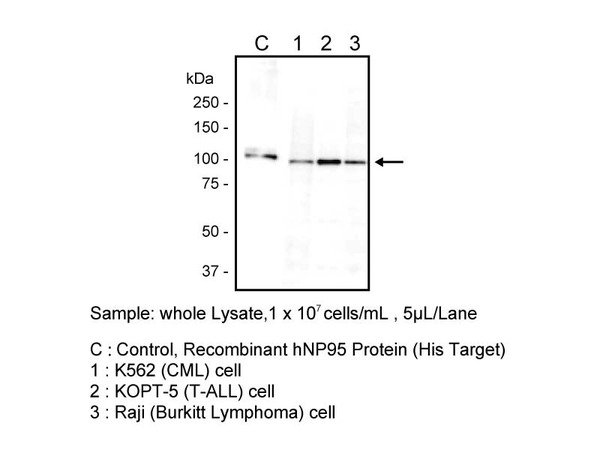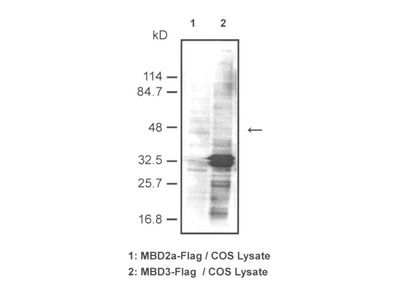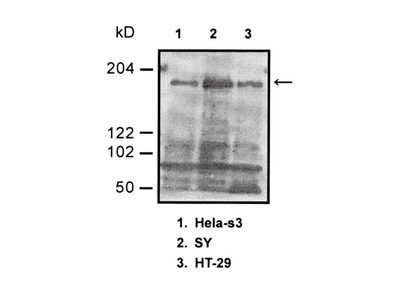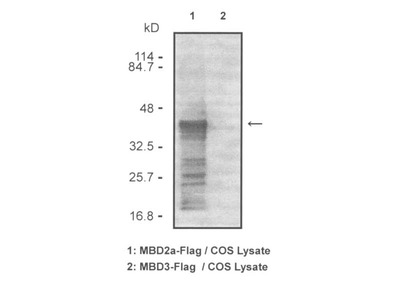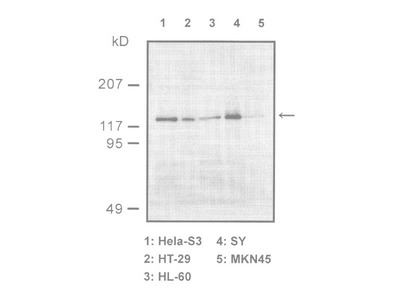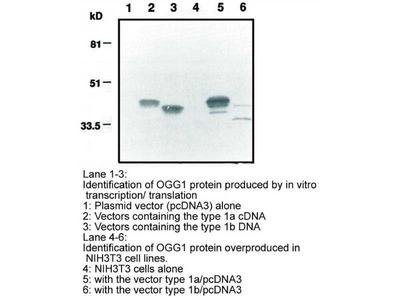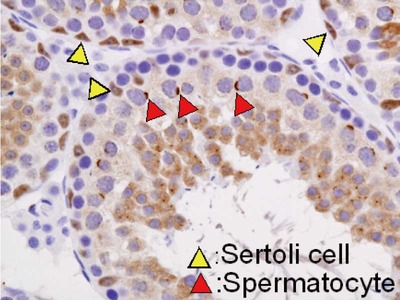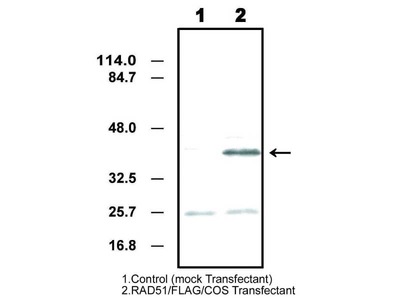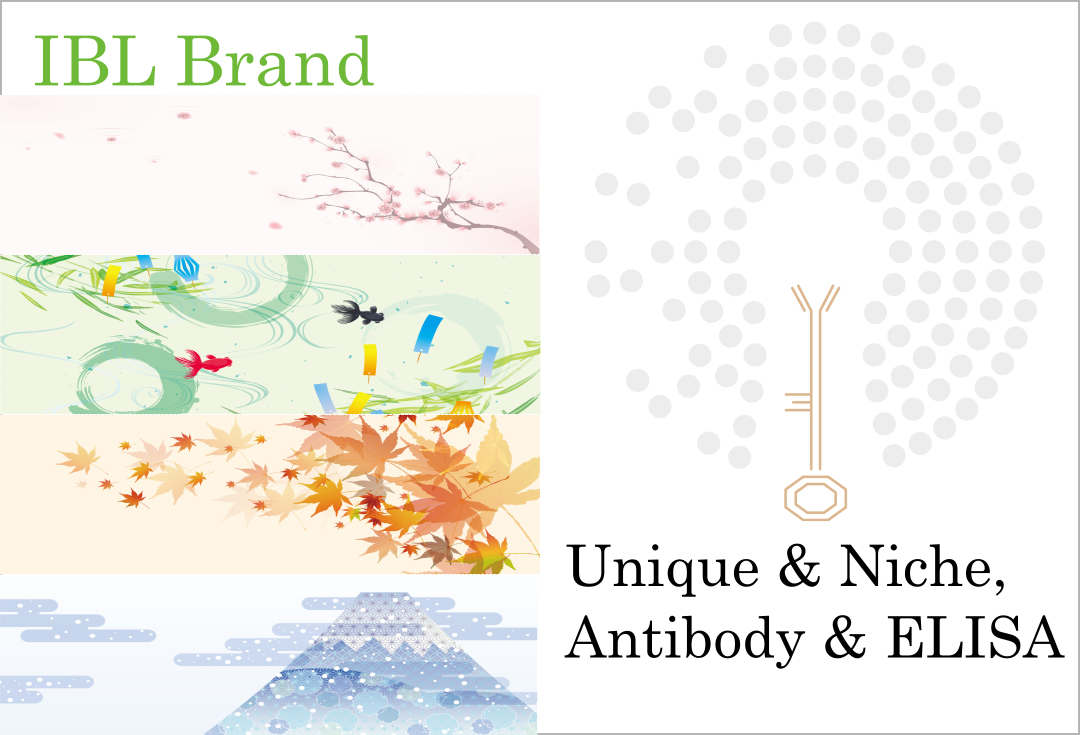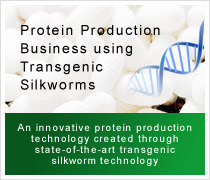- HOME >
- For Researchers >
- Product Search >
- Search Result >
- #10371 Anti-Human NP95 (mt40) Mouse IgG MoAb
Product Search
#10371 Anti-Human NP95 (mt40) Mouse IgG MoAb
- Intended Use:
- Research reagents
- Application:
- WB
- Package Size1:
- 100 μg
- Package Size2:
- 10 μg
- Note on Application Abbreviations
- WB:Western Blotting
※ The product indicated as "Research reagents" in the column Intended Use cannot be used
for diagnostic nor any medical purpose.
※ The datasheet listed on this page is sample only. Please refer to the datasheet
enclosed in the product purchased before use.
Product Overview
Product Overview
| Product Code | 10371 |
|---|---|
| Product Name | Anti-Human NP95 (mt40) Mouse IgG MoAb |
| Intended Use | Research reagents |
| Application | WB |
| Species | Human |
| Immunizing antigen | Purified human NP95 protein |
| Source | Mouse-Mouse hybridoma (SP210 × BALB/c mouse spleen cells, ascites) |
| Clone Name | mt40 |
| Subclass | IgG1 |
| Purification Method | Affinity purified with Protein A |
| Package Form | Lyophilized product from 1 % BSA in PBS containing 0.05 % NaN3 |
| Storage Condition | 2 - 8℃ |
| Poisonous and Deleterious Substances | Applicable |
| Cartagena | Not Applicable |
| Package Size 1 | 100 μg |
| Package Size 2 | 10 μg |
| Remarks1 | The commercial use of products without our permission is prohibited. Please make sure to contact us and obtain permission. |
Product Description
Product Description
Np95 has been originally found as a tumor-specific nuclear antigen of 95kDa in mice. Experiments using B10 strains showed that Np95 is enriched in precancerous cells and is abnormally expressed throughout cell cycle in radiation-induced lymphomatoid cells. Recent attention is put on the epigenetic role of Np95, which mediates the interplay between DNA methylase and hemi-methylated sites to maintain DNA methylation patterns at replication forks. This antibody is available for detection of the human nucleoprotein NP95 (also known as UHRF1), whose function is dependent on S-phase in non-neoplastic cells but could be modified with abberant cell cycle during tumorigenesis.

